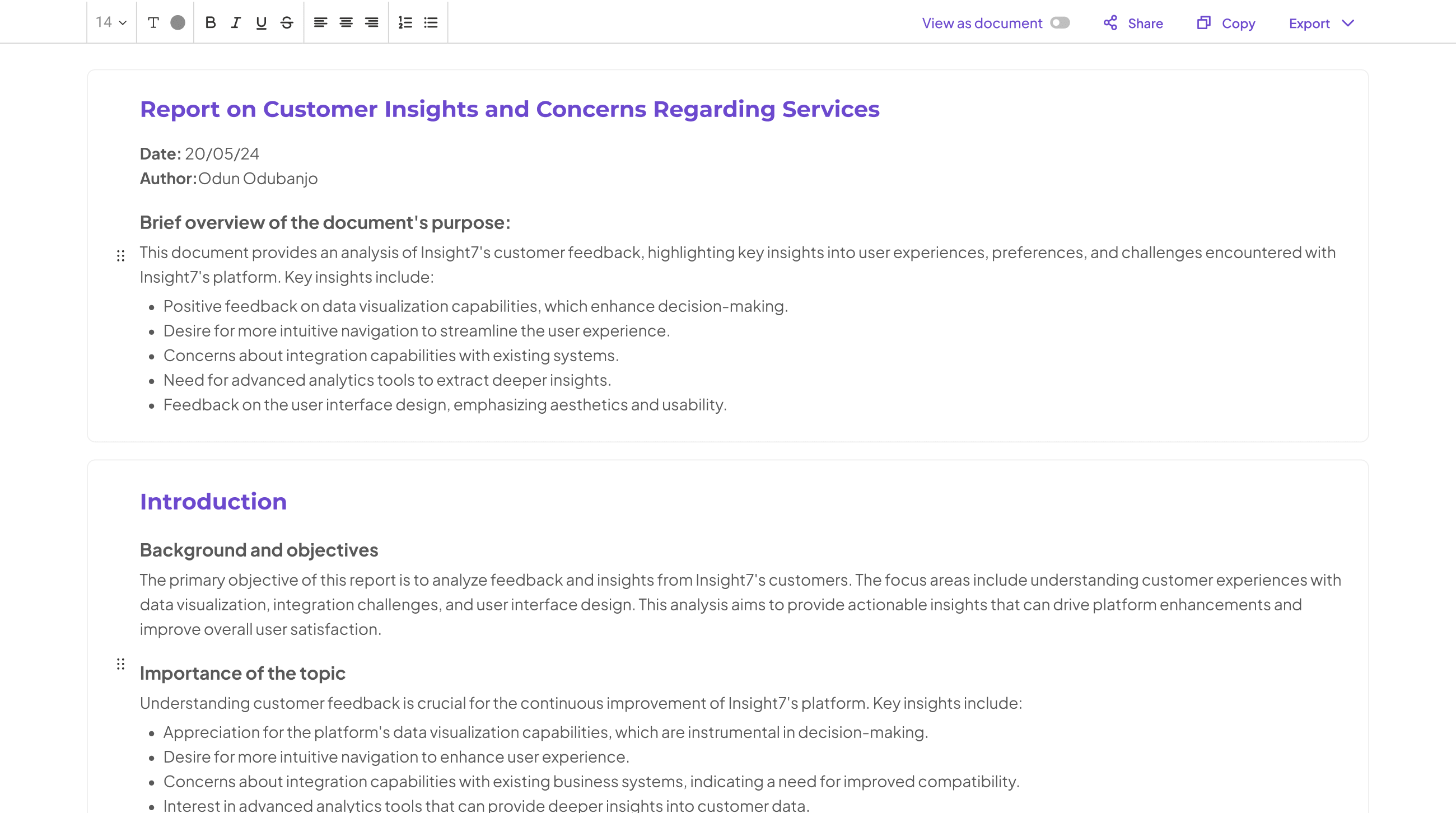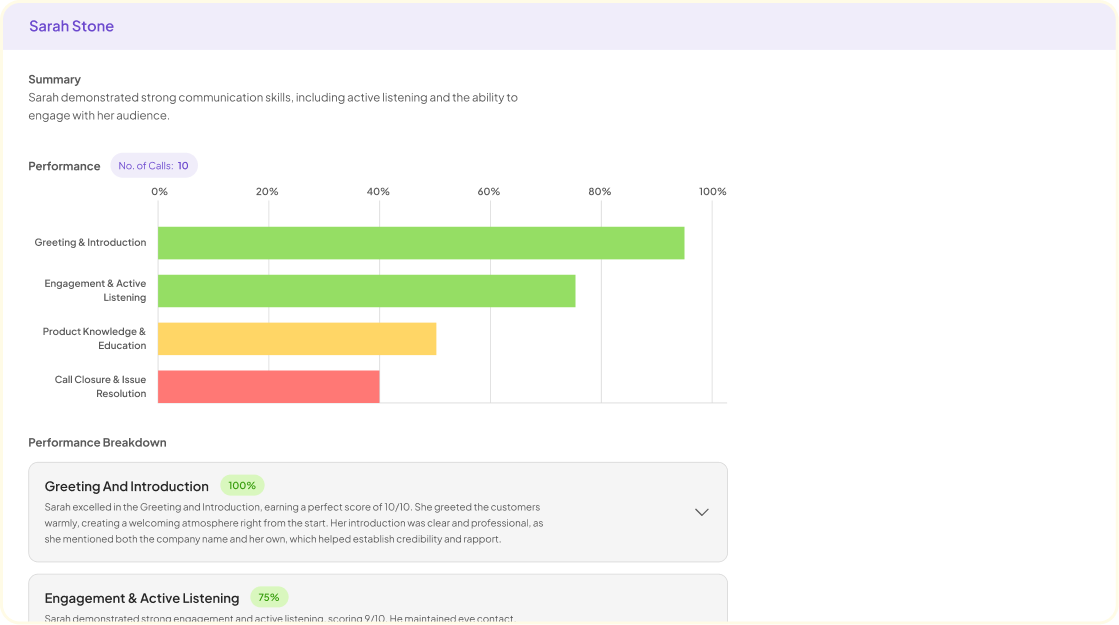Understanding Market Research Structure is essential for anyone involved in data-driven decision-making. By organizing information systematically, you can draw valuable insights from complex datasets. This structure involves various components, including data collection, analysis, and reporting, all of which serve a specific purpose in guiding strategic planning.
A well-defined Market Research Structure helps stakeholders identify key trends and consumer preferences effectively. It ensures that relevant information is presented clearly, making it easier to formulate actionable strategies. Ultimately, mastering this structure can enhance the impact of your market research, leading to more informed business decisions and better alignment with customer needs.
Transcribe & extract insights from interviews. At Scale.

Understanding the Market Research Structure
Understanding the Market Research Structure involves recognizing the vital components that make up effective market analysis. A clear structure helps in organizing data and deriving actionable insights. Typically, the market research framework includes several key elements: objectives, methodology, data collection, analysis, and reporting. Each part plays a crucial role in ensuring the research is thorough and reliable.
Firstly, defining objectives outlines what you aim to achieve with your research. The methodology follows, detailing the approach for gathering information. Data collection can occur through surveys, interviews, or secondary research sources. Once data is collected, analysis takes place to uncover trends and insights. Finally, the findings are reported, summarizing the research in an understandable and actionable format. Understanding this structure not only aids in conducting better research but also ensures that stakeholders can make informed decisions based on the findings.
Key Components of a Market Research Structure
A well-defined market research structure forms the backbone of any successful report. Essential components include clear objectives, a comprehensive methodology, defined target demographics, and proper data collection strategies. Each of these elements plays a critical role in informing decision-making and ensuring the research findings are actionable.
First, the objectives should outline what the research aims to achieve. Next, a detailed methodology explains how the data will be gathered and analyzed. Understanding the target demographics ensures the research is relevant and accurately reflects the market. Finally, robust data collection strategies lay the foundation for obtaining reliable insights, allowing researchers to draw valid conclusions. When these components are meticulously crafted, the overall market research structure can yield valuable insights that guide strategic decisions.
Importance of a Well-Defined Structure
A well-defined structure is crucial for an effective market research report. It acts as a blueprint that guides the readers through the findings and insights presented. When the market research structure is organized logically, it helps stakeholders easily comprehend the data, enabling them to make informed decisions. Each section should flow smoothly into the next, creating a cohesive narrative.
Additionally, a clear structure enhances the credibility of the report. It demonstrates professionalism and attention to detail, crucial traits in market research. By breaking down findings into distinct sections—such as objectives, methodology, analysis, and recommendations—readers can quickly locate the information relevant to them. Establishing this framework does not just improve readability; it also aids in the presentation of complex data, making the insights actionable and strategic. Ultimately, a structured document becomes a vital tool for driving business growth and innovation.
Crafting a Market Research Report
Crafting a market research report involves several critical elements that collectively structure your findings and recommendations. First, begin with a clear introduction that outlines the objectives of your research and the questions you aim to answer. This section sets the tone for the entire document and ensures that readers understand the report’s purpose.
Generate Detailed Reports from Your Qualitative Data in Minutes.
Next, present a well-organized methodology section. Here, you should detail how data was collected, including surveys, interviews, and other research methods used. Following this, compile your findings, highlighting key insights and trends. Discuss the implications of these results in a dedicated analysis section, addressing how they relate to your original questions.
Finally, conclude with actionable recommendations based on your findings. These recommendations should be practical and directly connected to the data presented earlier. By following this market research structure, you can create a comprehensive report that effectively communicates your insights and drives decision-making.
Step-by-Step Guide to Building Your Report
Building your report with a clear market research structure is crucial for conveying your findings effectively. Begin by defining the objectives of your research, ensuring you set a clear focus for the report. Next, gather relevant data that aligns with your objectives, choosing both qualitative and quantitative methods as necessary.
Once you have collected your data, organize it logically. Create sections that detail your methodology, findings, and analysis. Present your results using visuals, such as charts and graphs, to enhance understanding. Summarize your insights succinctly, and conclude with actionable recommendations for your audience. Finally, ensure your report is well-edited and formatted for a professional presentation. By following these steps, you’ll construct a comprehensive market research report that effectively communicates your insights and findings.
Common Pitfalls to Avoid in Market Research Report Writing
Market research report writing can often lead to avoidable mistakes. One common pitfall is the lack of clarity in your objectives. Failing to define clear goals can result in irrelevant data and confusing conclusions. Another issue arises from overloading the report with excessive data, making it difficult for readers to discern key insights. A succinct presentation of findings is crucial for effective communication.
Additionally, neglecting the importance of a structured format can undermine your credibility. Adhering to a standardized Market Research Structure helps ensure that findings are presented logically. Analysts should also be cautious about bias in their interpretations, as subjective views can distort the presented findings. Finally, overlooking the editing phase can compromise the report’s professionalism, so meticulous proofreading is essential. By addressing these pitfalls, you will enhance the reliability and effectiveness of your market research reports.
Conclusion: Streamlining Your Market Research Structure
To streamline your market research structure, focus on creating a coherent framework that simplifies data analysis and interpretation. Start by defining clear objectives for your research, which will guide your data collection and segmentation efforts. Effective organization of your data allows you to draw more relevant insights tailored to specific markets or locations.
Transcribe & extract insights from interviews. At Scale.

Next, establish standardized formats for reporting identified trends and findings. This consistency not only aids in internal communication but also enhances the understanding of your market performance across various demographics. By refining your approach to market research, you enable your team to quickly adapt and make informed decisions based on reliable data.


